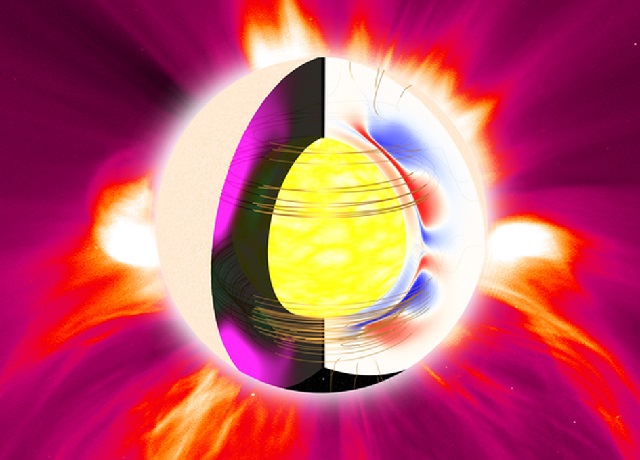The study authored by Bindesh Tripathi, Dibyendu Nandy and Soumitro Banerjee at the Center of Excellence in Space Sciences India (CESSI) and the Department of Physical Sciences, IISER Kolkata provided a theoretical explanation for the stellar mid-life crisis of the stars that are as old as our Sun.
As per Nandy, "Observations of sun-like stars show a sudden transition to an inactive phase. Stellar activity such as sunspots, flares, plasma wind output reduces for middle-aged stars that are about 4.6 billion years old."
Stars Midlife Crisis: What was found in the study?
In the study, the scientists went on to observe that the magnetic field generation mechanism can become slow and weak in the case of stars, our Sun's age. The scientists used the simulations of magnetic field generation in stars. The study says that the stars like our sun remain in two activity states- a low activity state and a high activity mode.
This is the first work that can explain a variety of peculiar behaviour that astronomers come across in middle-aged stars.
The stars like these often experience a steady stream of plasma or charged particles called Solar Winds escaping at regular intervals.
Take a look at the magnetic field changes experienced by a star in midlife

The wind carries them away at angular momentum over time. This outflow slows the rotation of the star over time. This slower rotation in turn leads to less efficient generation of magnetic fields and lesser stellar activities.
It also means that there would be reduced stellar spots, and magnetic storms and similar phenomena would be observed in the stars linked to the particular mid-life crisis star.
What is Stellar Gyrochronology?
It is a term used by astrophysicists to estimate the age of a star based on a measurement of its rotational period. This relationship breaks down when the star becomes middle-aged and gyrochronology does not work for them any longer.
Professor Nandy backed this up by informing, “Our dynamo simulations show that a middle-aged star like the Sun can often switch to a low activity mode, resulting in drastically reduced angular momentum losses by magnetised stellar winds and the breakdown of gyrochronology relations.”
Apollo 15: How did NASA put a car on the moon?
Coronal mass ejection from the Sun shown by NASA explained [See video]
Comments
All Comments (0)
Join the conversation